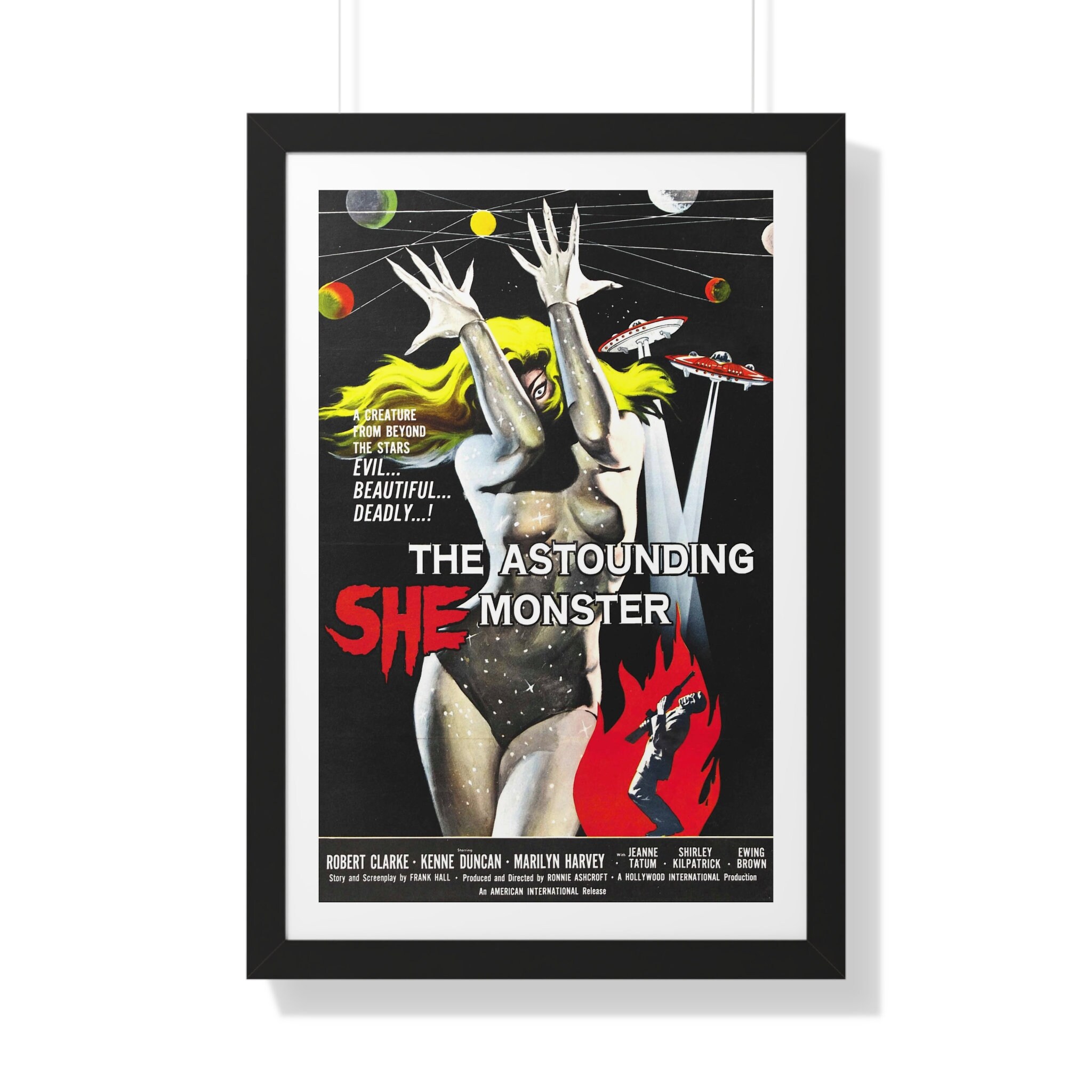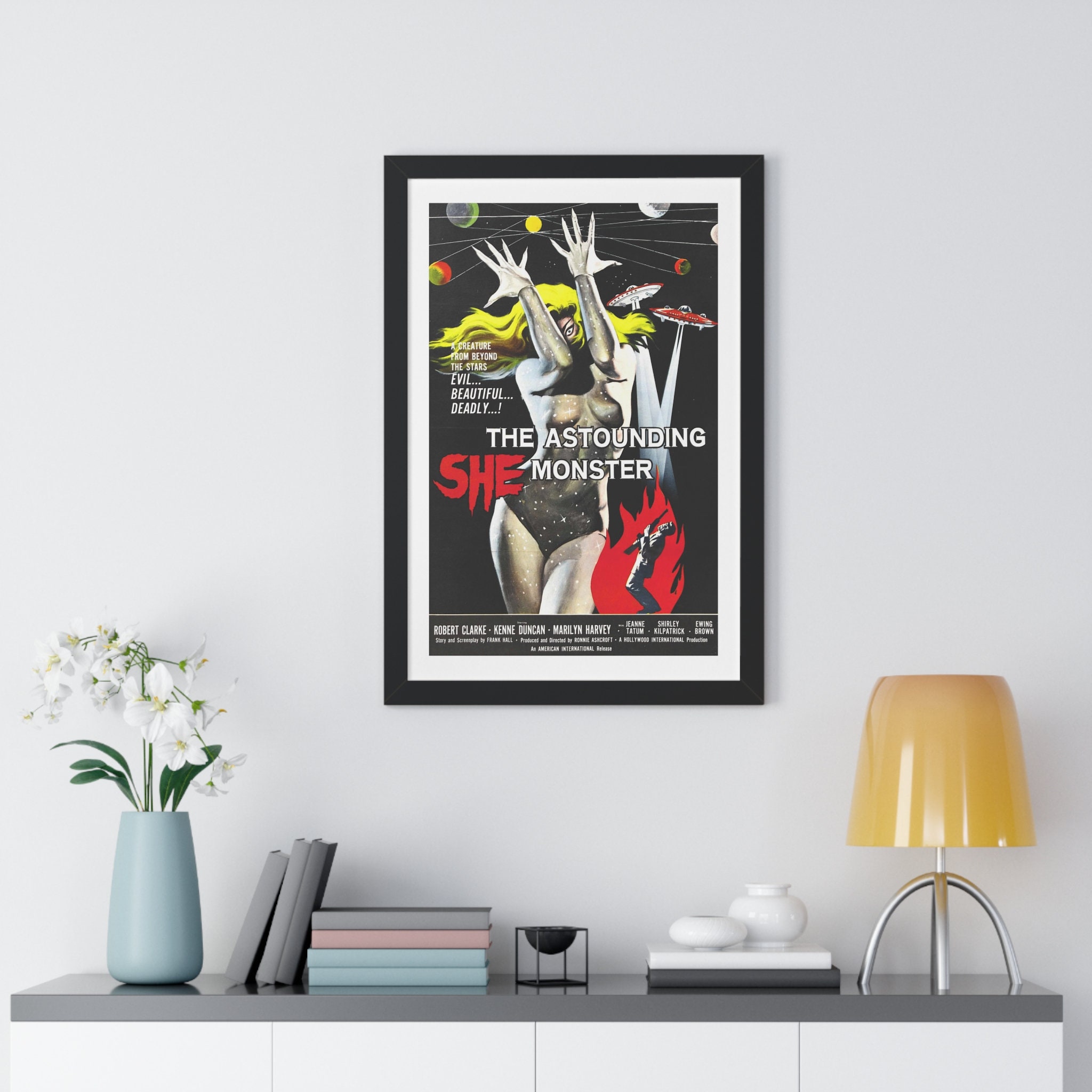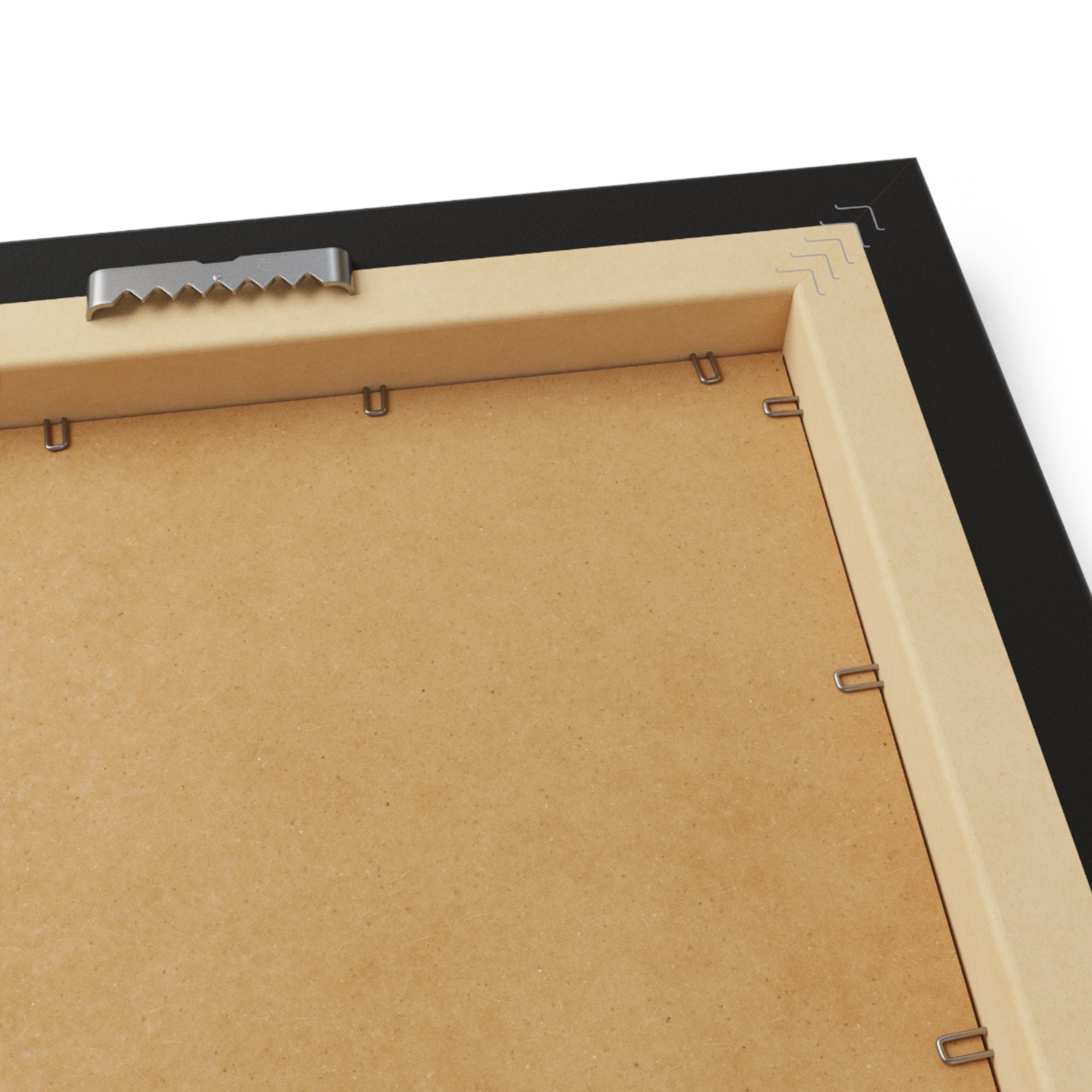The Astounding She-Monster Framed Movie Poster: Classic Sci-Fi Art (20"x30")
$110.00
This is a reproduction of a 1957 poster, for the movie, "The Astounding She Monster".
"The Astounding She-Monster" is a 1957 American science fiction horror film directed by Ronald V. Ashcroft. This film is a classic of the B-movie genre, known for its low-budget production, cheesy effects, and somewhat campy storytelling.
The film stars Robert Clarke as Dick Cutler, a geologist. The storyline revolves around a group of criminals who kidnap a wealthy woman and take her to a remote cabin in the mountains. Coincidentally, Cutler is staying in the cabin.
However, the plot takes a turn when a glowing alien woman (played by Shirley Kilpatrick) lands nearby in a spaceship. The "She-Monster," as she's called, is immune to bullets and has a lethal touch, and she begins to stalk the characters.
Despite its low budget and somewhat lackluster special effects, "The Astounding She-Monster" has a certain charm, and it reflects the 1950s fascination with aliens and the unknown possibilities of outer space. It's also known for its creative poster art, featuring a tantalizing depiction of the She-Monster herself.
Overall, "The Astounding She-Monster" is a movie that is enjoyable for fans of vintage sci-fi and B-movies, who can appreciate its place in the annals of science fiction and horror cinema.
The poster comes already framed and can be securely hung with the necessary hardware already attached. Its high quality is evident in the use of archival-grade photo paper and ink typically used in museums. The framing material is made of MDF, which is considered an eco-friendly option. Additionally, the frame is low maintenance and resistant to swelling and warping, ensuring long-lasting durability.
Poster specs:
• Poster size: 20"x30"
• Paper: LexJet Premium 200 gsm
• Finish: Matte
Printer specs:
• Printer: Canon iPF9400, which is a professional high-end, inkjet printer
• Ink: Canon 12-color Aqueous, which is acid free, archival quality
Frame specs:
• Frame material: MDF with a black finish
• Hanging hardware: Already attached (see photo)
• Cover: Acrylic
MDF (Medium Density Fiberboard) is an extremely durable, composite wood product made from recycled wood fibers, which makes it a more environmentally friendly option compared to traditional wood products.
Shipping from United States
Processing time
1-7 business days
Customs and import taxes
Buyers are responsible for any customs and import taxes that may apply. I'm not responsible for delays due to customs.
Payment Options
Returns & Exchanges
I gladly accept returns and exchanges
Just contact me within: 14 days of delivery
Ship items back to me within: 30 days of delivery
I don't accept cancellations
But please contact me if you have any problems with your order.
The following items can't be returned or exchanged
Because of the nature of these items, unless they arrive damaged or defective, I can't accept returns for:
- Custom or personalized orders
- Perishable products (like food or flowers)
- Digital downloads
- Intimate items (for health/hygiene reasons)
Conditions of return
Buyers are responsible for return shipping costs. If the item is not returned in its original condition, the buyer is responsible for any loss in value.
Frequently Asked Questions
What is All-Over-Print (AOP)?
All-Over Print (AOP) is a printing method that uses dye-sublimation to print a design onto polyester. During the dye sublimation process the dye is absorbed into the fabric. Since, it is not printed on the surface, like most t-shirts, it provides for a fantastic soft-to-the-touch feel and superior breathability.
AOP is a more time consuming method than screen printing or direct-to-garment (DTG) printing, so the prices are higher and the production times are longer, but the results are most definitely worth it.
Advantages of AOP:
The design won't peel off, unlike typical screen printing.
The design is part of the fabric of the item, so it will last as long as the item does.
The intensity of color is often unmatched.
What is Giclée?
Giclée (pronounced zhee-CLAY or often gee-CLAY) is a printing process that creates a museum quality, archival print. Special acid-free, paper is printed with fade resistant ink using a state-of-the-art, large format inkjet printer.
What is a gallery wrap canvas?
Gallery wrap is a style of displaying a canvas that doesn't show any visible staples or nails holding the fabric to the wooden stretcher bars. This style of canvas is intended to be hung unframed.
What is a gallery mirror wrap canvas?
Mirrored edges (mirror wrap) is used to show the whole image on the main surface, rather than printing the edges of the image on the sides (image wrap) of the canvas frame. It is usually used when there is necessary detail on the edges of the image. Image wrap is used when the focal point of the image is in the center.


